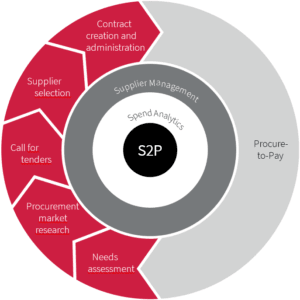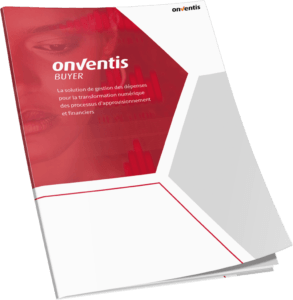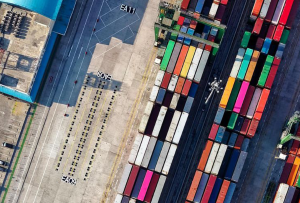What is Source-to-Contract?
Procurement Topics in a Nutshell
Source-to-Contract optimises the sub-process steps from requirements determination to contract management. The aim is not only to achieve savings, but also to increase compliance in procurement and thus the overall effectiveness of purchasing.

Source-to-Contract simply explained
Source-to-Contract, S2C for short, is part of strategic procurement and covers the sub-process steps of requirements determination, the conduction of tenders and procurement auctions up to awarding the tenders and the subsequent contract management. In the process, measures are implemented to develop and implement long-term procurement strategies in the medium term. In addition to savings, the aim is to increase compliance in procurement and thus overall purchasing effectiveness.
Strategic procurement
Strategic procurement is a process that involves long-term planning to ensure that supplies are obtained under the most favourable conditions and to align with the overall objectives of the organisation at the same. It also requires careful optimisation methods to minimise supply risks, increase transparency in the procurement process, and guarantee a steady flow of goods with the help of strategy. Achieving these objectives involves strategic sourcing, implementing digital systems, and continually evaluating the entire procurement process.
Source-to-contract as part of the overall source-to-pay process
The source-to-contract procedures are a crucial component of the broader purchasing process known as “source-to-pay” (also known as S2P). S2P is composed of strategic, tactical, and operational steps, which encompass both the source-to-contract and procure-to-pay procedures, as well as other procurement disciplines like supplier management and spend analysis. This comprehensive approach enables the management, analysis, and optimisation of the entire procurement cycle.

S2C processes from requirements determination to contract creation
Each procurement process initially starts by identifying the needs of the company, individual departments, or demand carriers. Source-to-contract provides assistance from the outset by managing the determination of requirements, tenders and auctions, awarding of tenders, and contract management. Measures are being implemented to help realise the long-term procurement strategies within the medium-term timeframe. The ultimate goal of the tactical purchasing process is to improve the efficiency of purchasing.
To reach this objective, numerous instruments are available, which contribute medium-term to the fulfilment of the procurement goals. If a need develops different “Requests” (RFI, RFP, RFQ) can be accomplished after carrying out the necessary procurement research. Subsequently, the best suppliers are then selected by different means such as total-cost-of-ownership-analyses or procurement auctions. Contract management concludes the source-to-contract process and launches the operational procurement process.
Classic challenges in the source-to-contract area
Purchasing is constantly on the lookout for the best-performing suppliers and the best conditions, and then deals with (follow-up) negotiations and contract management. Before digital systems were available for this purpose, standard office tools – especially Excel – were used for the process steps in the source-to-contract area. The challenge in strategic (and operational) purchasing here is the susceptibility to errors due to manual entries, the lack of opportunity for collaborative work between buyers and suppliers, and the lack of status reports on outstanding deliveries. Now, there are a variety of digital solutions that solve these challenges in purchasing and make the day-to-day work in procurement organisations easier.
Digital source-to-contract processes for optimised procurement
Digitalised as well as automated requirements capture, tendering, awarding and contract management play a key role in the optimisation of S2C processes. Cloud-based S2C applications provide the infrastructure to holistically manage your global procurement. Templates for tenders, product or price requests save time and maximise the number of relevant offers. Standardised structures enable direct price comparisons and cost breakdowns. This allows you to record planned expenditures and identify the best prices as well as positions with negotiation potential. Digital source-to-contract creates the basis for a holistic digital S2P process – from the demand item to an inquiry and order to invoice processing.
Weitere BlogsMore BlogsMeer blogs




